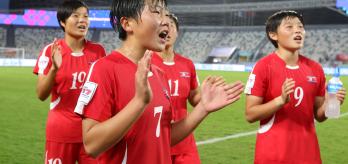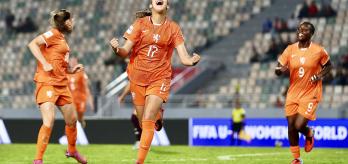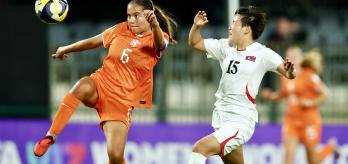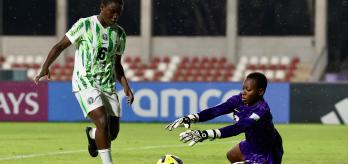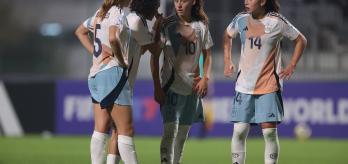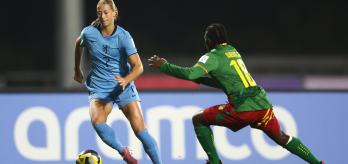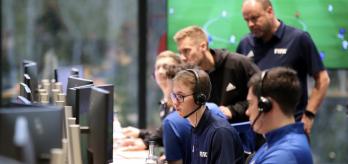The Netherlands take on holders Korea DPR in the final of the FIFA U-17 Women’s World Cup Morocco 2025™ on Saturday, 8 November. The two sides have already met once in this tournament, with the AFC team beating their UEFA opponents 5-0 in their final group-stage match. However, the Netherlands went down to 10 players after 24 minutes and have since gathered momentum, knocking out big-hitters USA, France and Mexico en route to the final.
Series overview
-
Part 1: Clémentine Touré explains how Korea DPR’s performances have been defined by a direct, coordinated style and exceptional technical precision.
-
Part 2: Mo Marley shares why the Netherlands’ recent variability both in and out of possession makes them difficult to break down and challenging to defend against.
-
Part 3: Thierry Barnerat and Pascal Zuberbühler assess the strengths of both goalkeepers and show how they complement their teams’ overall playing styles.
-
Part 4: Asako Takakura analyses the final’s tactical match-up, sharing how the differing styles could produce a different outcome than their previous encounter.
Korea DPR: Directness underlined by technical precision
In this section, former head coach of Côte d’Ivoire’s women’s national team, Clémentine Touré, examines why Korea DPR have proven to be such a formidable opponent in this tournament.
In possession
Clémentine Touré: Korea DPR stand out for their direct, structured, disciplined and collective style of play. They are capable of maintaining a high tempo throughout the match. Playing in a 4-4-2 or 4-2-3-1 formation, Korea DPR displays a direct, fast-paced attacking game based on combinations of short and long passes, triangles, give-and-goes, reverse balls and potent shots.
The full-backs contribute to the offensive play by creating numerical superiority on the wings. The defensive midfielders play a pivotal role, ensuring verticality, passing between the lines and into spaces, or pushing forward with the ball at their feet into the final third.
The coordinated movement of the forwards allows them to exploit the wings and space in behind with tight crosses or cut-back crosses for shots. Korea DPR’s players stand out for the quality of their sharp, direct shots and their technical precision despite their young age. The team spirit is paramount. Cohesion, tactical rigour, constant concentration and maturity characterise this young team.
Out of possession
Without the ball, Korea DPR frequently use a relatively high block during the opposition’s goal kicks and build-up. The pressing is collective, compact, dense and synchronised. If the opponent escapes the high press, the current holders drop back into a compact mid-block to contain the opposition’s attack, seeking to intercept or break up the play. As soon as they regain possession, there is an immediate transition forward, demonstrating that their defensive organisation is designed to launch attacks.
Arranged in a 4-4-2 defensive system, the players are very close to each other, tightening the spaces between the lines and reducing the opponent’s time and space. Pressing is targeted at the ball carrier or the defensive line in order to trigger a quick recovery and take advantage of any imbalance. Their organisation during these moments limits the opponent’s options to progress and meaningful possession.
Each player’s role is well defined, which helps to maintain an organised structure, even when substitutions are made. Korea DPR has adopted a tight, collective defensive organisation with high tactical discipline. Rapid defensive transitions are used to gain possession or neutralise the opponent before they can attack from a comfortable position.




